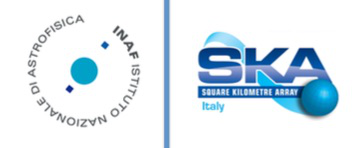Speaker
Description
In this talk we will highlight the existing synergies between SKA and Athena in the framework of two major research fields: AGN physics and cosmic web studies.
AGN physics:
A rich phenomenology of jets, winds, and accretion states has been observed in both active galactic nuclei (AGN) and X+ray binaries (XRBs), suggesting a connection between the accretion and ejection flows at different black hole masses, from supermassive down to stellar mass. In AGN, the radiation field from the disk and the outflows, both of winds and jets, are thought to play a fundamental role in the feedback invoked in galaxy formation and evolution. Notwithstanding their importance, our knowledge of the accretion and ejection phenomena and their interplay is still very limited. Single+object and population studies can explore the accretion/ejection mechanism in XRBs and AGN.
The Athena X+ray observatory will be launched when the complete SKA array will be fully operative. The combination of these two facilities will provide fundamental improvements on several topics, revolutionizing our comprehension of the accretion/ejection phenomena at all scales (spatial, mass, radio power). The Athena+SKA synergy will allow us to disentangle the jet/disk flows based on their different contributions to the overall spectral energy distribution, expected to be different in ADAF, ADAF+jet and standard disk/corona models. The superbe SKA and Athena sensitivities will lead to high temporal resolution, allowing to test the coronal emission models where reconnection events produce relativistic electrons, which may produce both the radio and the X+ray emission, leading to correlated variability. Given the large number of AGN that SKA will observe/detect, it will be possible to reconstruct all the AGN accretion phases in the local Universe, from pure ADAF, to ADAF+jet dominated, to accretion efficient regimes.
Cosmic Web:
The SKA promises to detect the synchrotron emission from shocked plasmas on scales beyond what is currently observed in galaxy clusters, finally imaging the location of the “missing baryons” of the cosmic web. This will have deep implications also for our understanding of how the magnetisation of cosmic structures has proceeded across cosmic epochs. By joining forces with the SKA, Athena should map the missing baryons in several regions: by observing with long exposures regions previously selected in the radio band, Athena will be able to collect enough X-ray photons to attempt first emission spectra from the missing baryons around galaxy clusters and in filaments. In particular, based on our ongoing campaign of simulations, we can predict that the interaction region of close pairs of galaxy clusters should emit enough radio waves to be detectable by the SKA, as well as enough X-ray photons to allow detections using the XIFU, which will allow us to capture these elusive baryons for the first time, and study their thermodynamical properties in detail.

